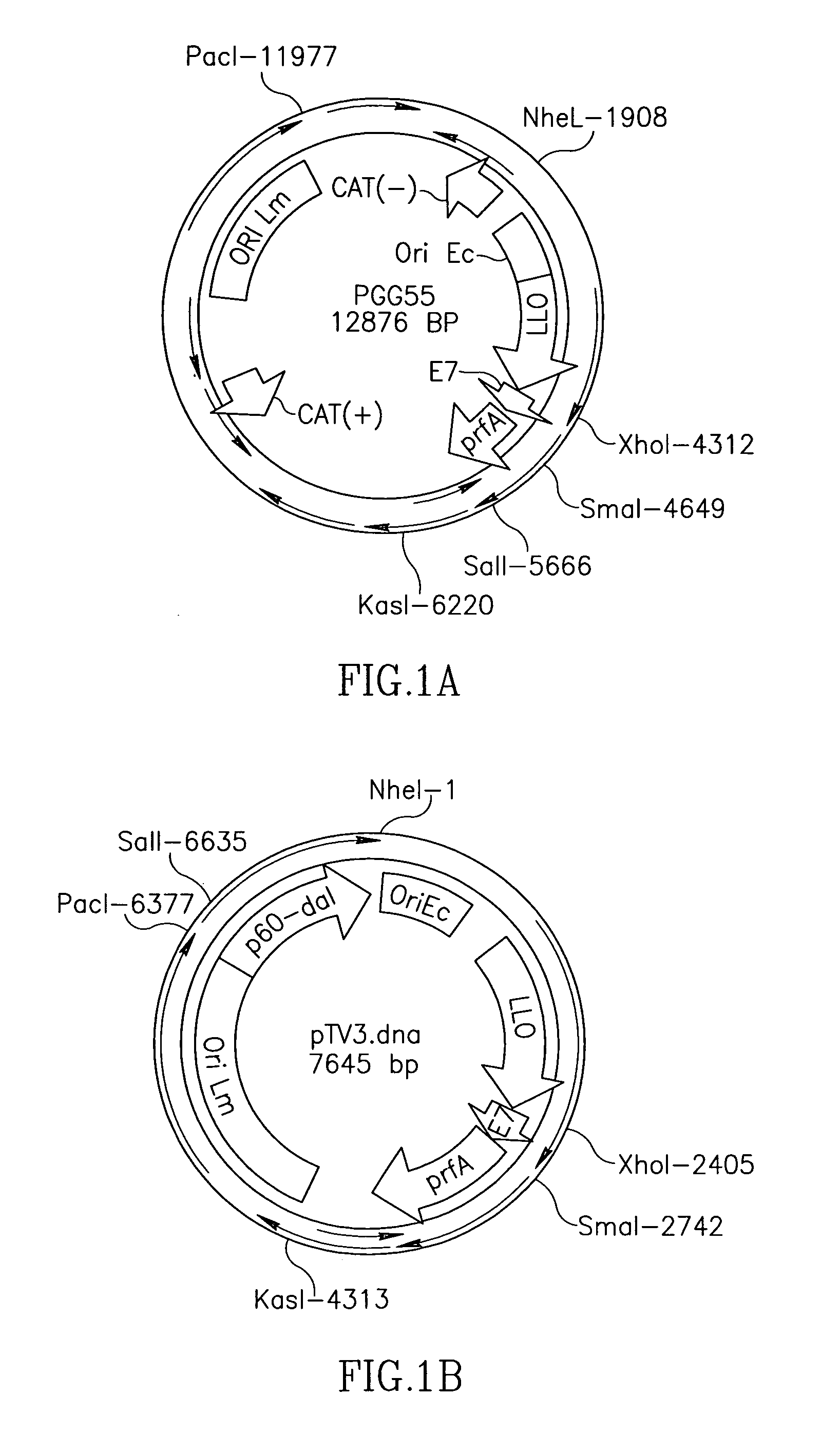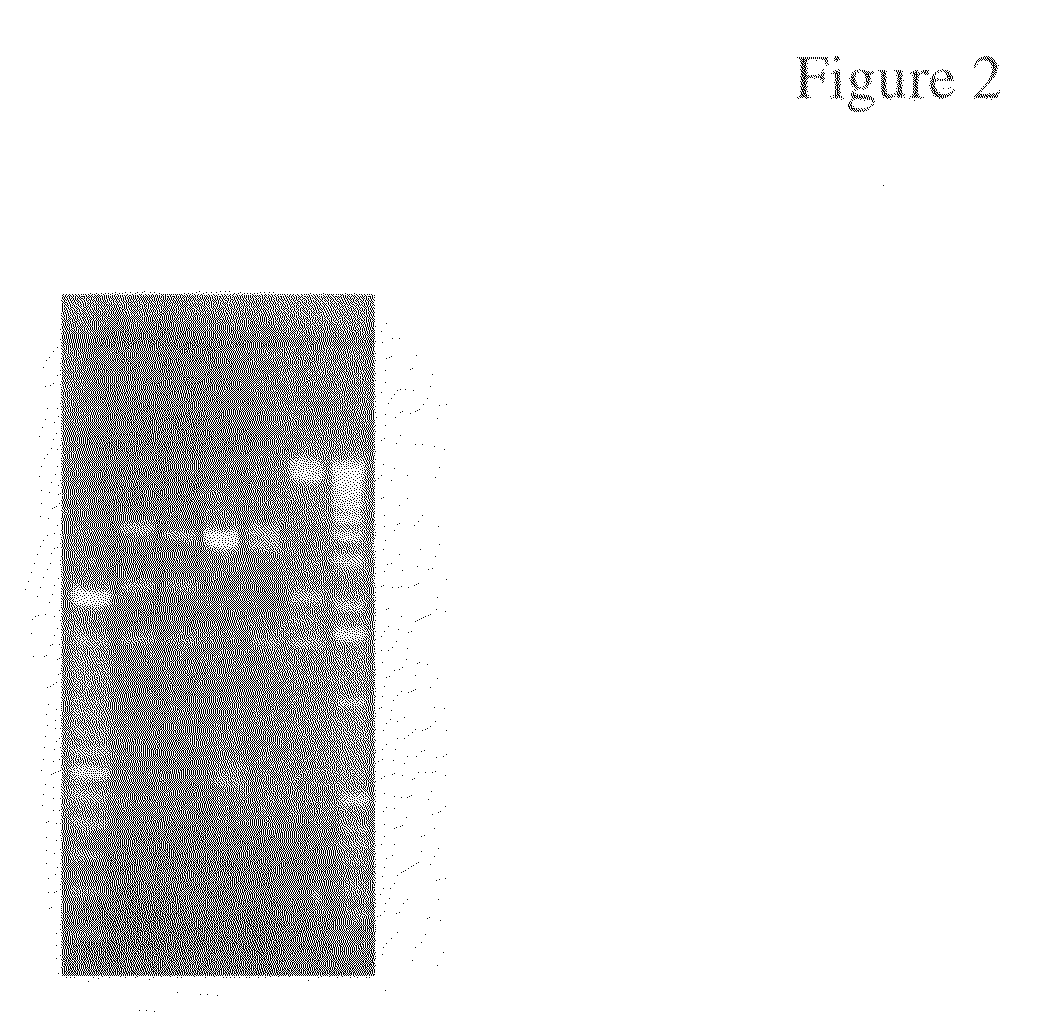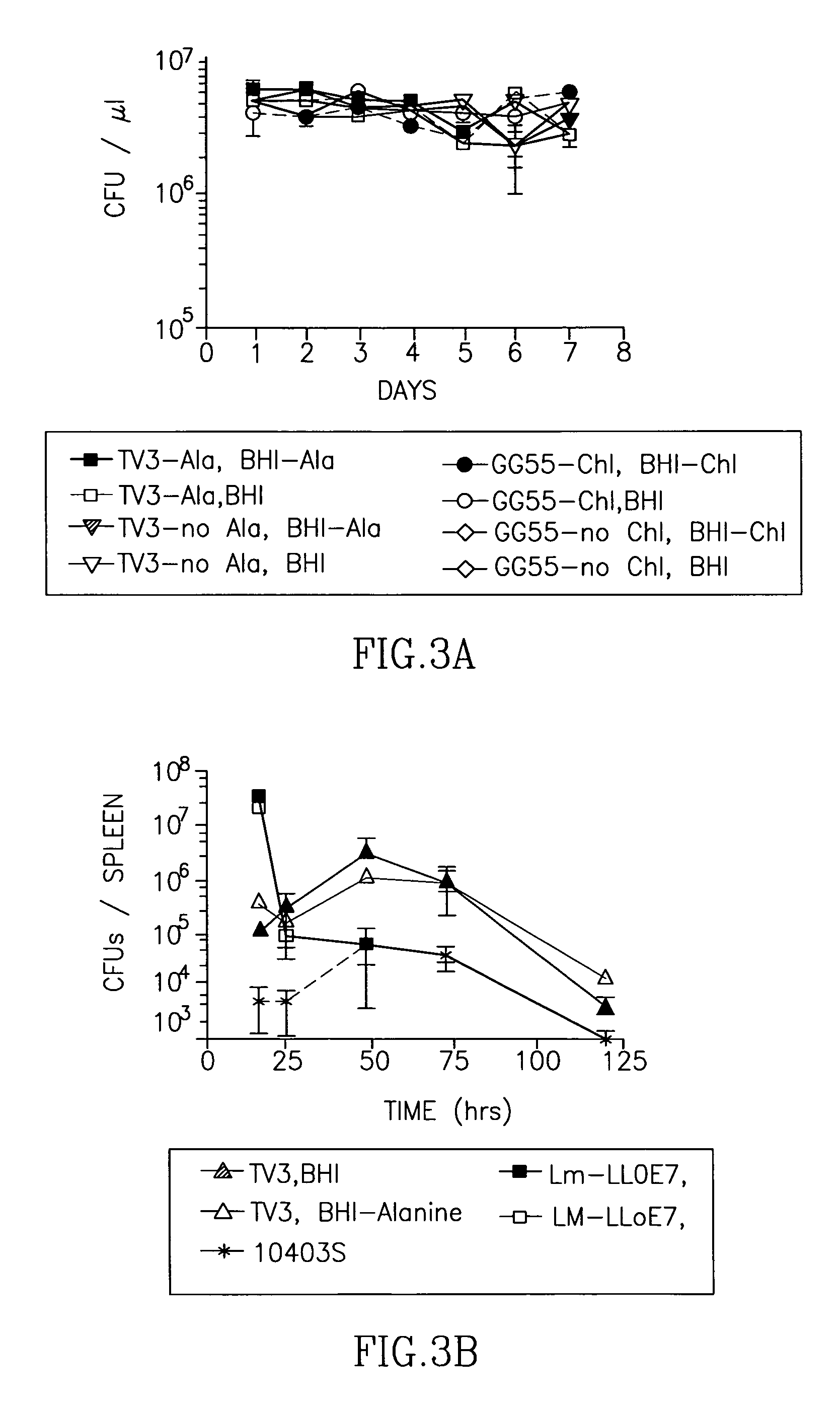Antibiotic resistance free vaccines and methods for constructing and using same
a technology of antibiotic resistance and free vaccines, applied in the field of listeria strains, can solve the problems of immune response, ineffective in combating intracellular organisms or tumors, and traditional vaccine strategies may not be completely effective, so as to reduce the incidence of infectious diseases
- Summary
- Abstract
- Description
- Claims
- Application Information
AI Technical Summary
Benefits of technology
Problems solved by technology
Method used
Image
Examples
example 1
A Plasmid Containing an Amino Acid Metabolism Enzyme Instead of an Antibiotic Resistance Gene is Retained in E. Coli and LM Both In Vitro and In Vivo
Materials and Experimental Methods
Bacterial Strains, Transformation and Selection
[0220]E. coli strain MB2159 was used for transformations, using standard protocols. Bacterial cells were prepared for electroporation by washing with H2O.
[0221]E. coli strain MB2159 (Strych U et al, FEMS Microbiol Lett. 2001 Mar. 15; 196(2):93-8) is an air (−) / dadX (−) deficient mutant that is not able to synthesize D-alanine racemase. Listeria strain Lm dal(−) / dat(−) (Lmdd) similarly is not able to synthesize D-alanine racemase due to partial deletions of the dal and the dat genes.
Construction of Lmdd
[0222]The dal gene was initially inactivated by means of a double-allelic exchange between the chromosomal gene and the temperature-sensitive shuttle plasmid pKSV7 (Smith K et al, Biochimie. 1992 July-August;74(7-8):705-11) carrying an erythromycin resistance ...
example 2
Plasmids Containing a Metabolic Enzyme do not Increase The Virulence of Bacteria
Materials and Experimental Methods
[0240]4×109 CFU of Listeria were thawed, pelleted by centrifugation (1 minute, 14000 rpm) and resuspended in 100 μl PBS, pH 5.5 with 1 M cysteine. Bacteria were serially diluted 1:2 and incubated for 45 minutes at 37° C. in order to activate secreted LLO. Defibrinated total sheep blood (Cedarlane, Hornby, Ontario, Canada) was washed twice with 5 volumes of PBS and three to four times with 6 volumes of PBS-Cysteine until the supernatant remained clear, pelleting cells at 3000×g for 8 minutes between wash steps, then resuspended to a final concentration of 10% (v / v) in PBS-Cysteine. 100 μl of 10% washed blood cells were mixed with 100 μl of Listeria suspension and incubated for additional 45 minutes at 37° C. Un-lysed blood cells were then pelleted by centrifugation (10 minutes, 1000×g). 100 μl of supernatant was transferred into a new plate and the OD...
example 3
Vaccine Strains Carrying Plasmids Containing a Metabolic Enzyme Mediate Antigen Expression
[0243]Antigen expression from the metabolic enzyme-containing plasmid was tested in vitro by Western blot. When analyzing equal amounts of total protein from bacterial culture supernatants, Lmdd-TV3 cultures contained approximately double the amount of total antigen than Lm-LLOE7 cultures. This difference may be a result of a higher overall metabolic load in Lm-LLOE7, due to the larger size of the plasmid (12.8 kB) compared to Lmdd-TV3 (7.6 kB).
[0244]Thus, metabolic enzymes can be used instead of antibiotic resistance genes to mediate plasmid retention in auxtrophic bacteria. Further, such plasmids have utility in expression of heterologous proteins in bacteria.
PUM
| Property | Measurement | Unit |
|---|---|---|
| temperatures | aaaaa | aaaaa |
| pH | aaaaa | aaaaa |
| diameter | aaaaa | aaaaa |
Abstract
Description
Claims
Application Information
 Login to View More
Login to View More - R&D
- Intellectual Property
- Life Sciences
- Materials
- Tech Scout
- Unparalleled Data Quality
- Higher Quality Content
- 60% Fewer Hallucinations
Browse by: Latest US Patents, China's latest patents, Technical Efficacy Thesaurus, Application Domain, Technology Topic, Popular Technical Reports.
© 2025 PatSnap. All rights reserved.Legal|Privacy policy|Modern Slavery Act Transparency Statement|Sitemap|About US| Contact US: help@patsnap.com



